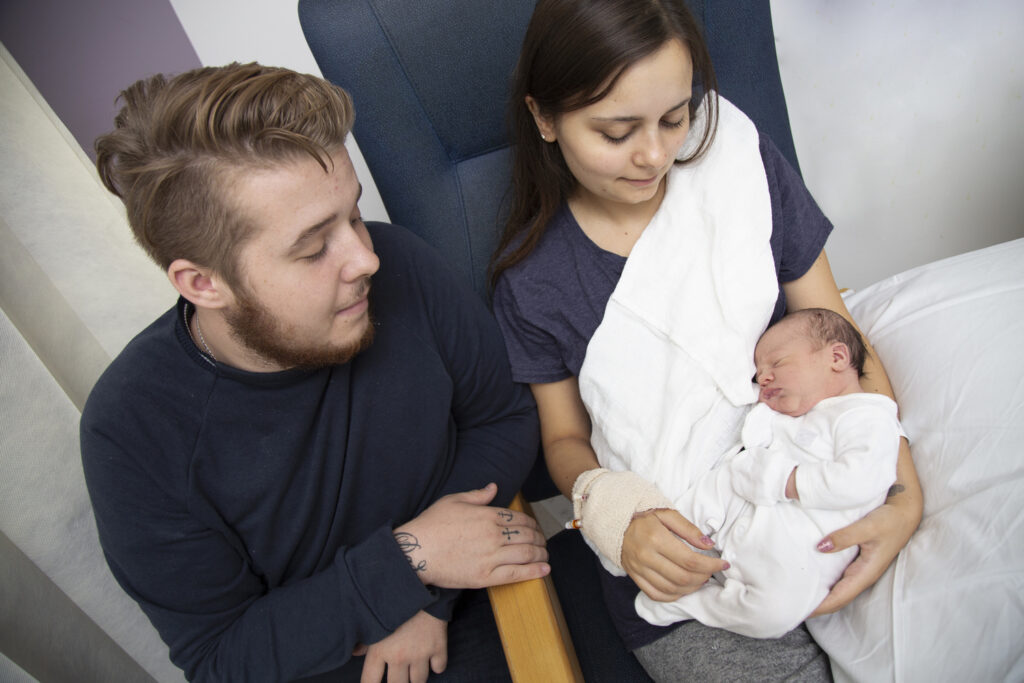Kelly, S., Redmond, P., King, S., Oliver‐Williams, C., Lamé, G., Liberati, E., Kuhn, I., Winter, C., Draycott, T., Dixon‐Woods, M. and Burt, J. (2020), Training in the use of intrapartum electronic fetal monitoring with cardiotocography: Systematic review and meta‐analysis. BJOG: An International Journal of Obstetrics & Gynaecology. Accepted Author Manuscript. https://doi.org/10.1111/1471-0528.16619
Training in the use of intrapartum electronic fetal monitoring with cardiotocography: Systematic review and meta-analysis

Why it matters
Cardiotocography (CTG) is a technical means of recording a fetal heartbeat and a mother’s contractions during pregnancy and labour, also known as electronic fetal monitoring (EFM). This is an important tool for the safe management of labour.
However, there are known problems with the ways EFM results are classified, interpreted and responded to by health care professionals. These inconsistencies can be problematic, and in some cases can lead to preventable harm occurring during childbirth. Harm that can be catastrophic for women, babies and their families.
Giving maternity staff training in cardiotocography remains the most frequently recommended way to improve the use of EFM. However it is unclear whether this training improves birth outcomes, and, if so, which form of training is most effective.
In November 2020, the government announced a £9.4 million investment in improving maternity safety. To ensure this resource is spent wisely, it is vital we know what works and why. In December 2020, multidisciplinary training was highlighted as an essential action in the Ockenden Report, the independent review of maternity services at the Shrewsbury and Telford Hospital NHS Trust.
In light of the Ockenden Report, the Royal College of Midwives and the Royal College of Obstetricians and Gynaecologists are advocating for a standardised national programme of training. This would be delivered locally by trained experts, and would see high quality clinical simulation combined with structured organisational learning interventions, to improve systems, culture and behaviour supportive of appropriate fetal monitoring interpretation and response.
Our approach
The team conducted a systematic review and meta-analysis to consider all the available evidence for training given to healthcare professionals in the use of CTG. We searched 11 databases cataloguing academic publications, as well as the grey literature (such as government and charity sector reports), for primary studies that reported on the impact of CTG training.
In total 64 studies were included in the end review.
What we found
Investing in staff training is essential to ensure safe maternity care, yet our analysis shows that the evidence base for such training is weak and underdeveloped.
Studies we analysed covered a diverse range of CTG training, which was reported on in different ways. The outcomes evaluated varied widely and in general the study quality was low.
In particular:
- Five randomised controlled trials reported that training improved the knowledge of maternity professionals compared with no training, but the evidence given is of low quality.
- Evidence for the impact of CTG training on neonatal and maternal outcomes is limited, shows inconsistent effects, and is of low overall quality.
- Evidence for the optimal content and method of delivery of training is very limited.
Despite the importance of staff proficiency in using CTG, the available studies have not shown impacts on birth outcomes even though there appears to be some evidence of impact on staff knowledge. It is also not clear what form of training is the best. The quality of the studies in this key area of practice, with high stakes implications for women and babies, for staff, and for organisations, is generally very poor.
Taking the learning forward
The poor quality evidence-base for CTG training is discomfiting, given the huge resources devoted to such training. Our study is clear that while training is essential, more investment is needed to generate evidence for how best to design and deliver training to achieve better birth outcomes.
Taking account of the context for EFM and the team-based nature of maternity care will be crucial here as CTG training is only one factor in improving birth outcomes. Our For Us Framework outlines what good looks like for safety in maternity units. It strongly emphasises proficiency, but also says it is just one component – albeit an indispensable one – in a systems approach to high quality, safe care. Most benefits are likely to come from whole system approaches that include training on CTG as part of overall organisational strengthening.
Until better evidence is generated, the study emphasises that CTG training should be consistent with the wider evidence base for maternity training, ensuring training is local, multi-professional, prioritises integrated team working, and makes use of support tools.




